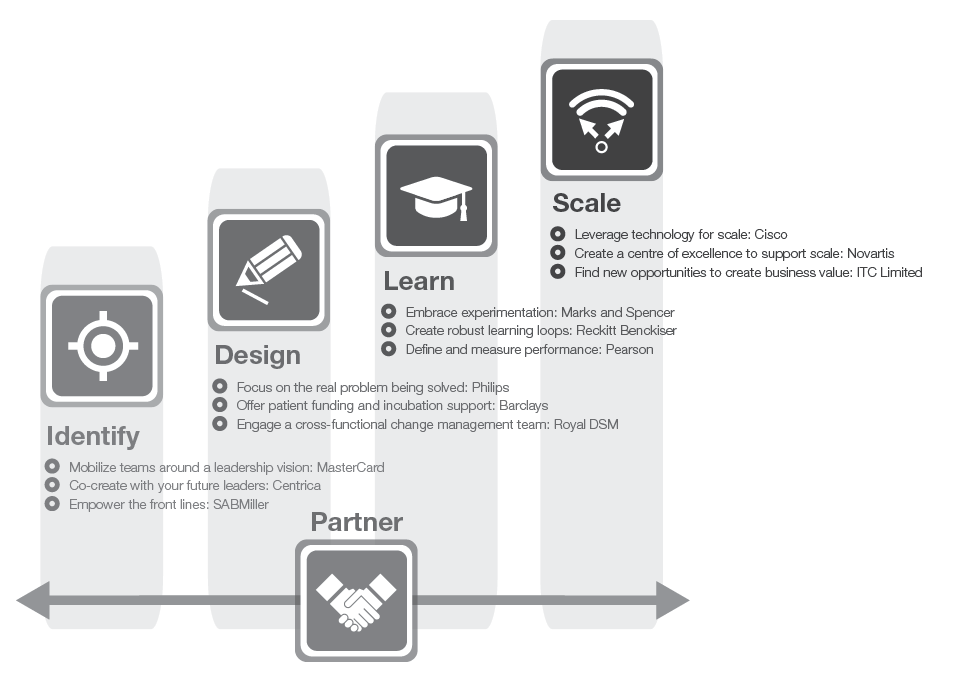What is the true business of business?

Image: REUTERS/Benoit Tessier

Get involved with our crowdsourced digital platform to deliver impact at scale
Stay up to date:
Social Innovation
In an article in the New York Times in 1970, Milton Friedman wrote about “the social responsibility of business.” Having expounded his view that the only social responsibility of business was “to increase its profits” he described those who took a contrary view as “puppets of the intellectual forces that have been undermining the basis of a free society” and their opinions as a “fundamentally subversive doctrine.”
Friedman’s views on monetary economics dominated the last quarter of the 20th Century and it would not be an exaggeration to say that in most countries of the developed world they are still a critical driver of economic policy.
His views on the social responsibility of corporations, however, appear to have fared less well. Today over 90% of major businesses have specific programs dedicated to Corporate Social Responsibility (CSR). Most CEOs talk about their organisation’s commitment to a wide range of philanthropic, employee engagement and other benevolent activities at almost every possible opportunity.
The limits of altruism alone
While this development is undoubtedly a positive one it is also true that as Friedman also noted “the business of business is business”. CSR is a good thing as far as it goes but the greater opportunity for the business community is to find ways to leverage their networks, their capital, their people and their technology to help create practical, sustainable, market based approaches that help benefit society in general and low income or underserved populations in particular.
As long as CSR stays fundamentally altruistic in its motivation it is unlikely ever to be considered as being core to business and is unlikely ever to scale or to provide lasting solutions to critical social challenges.
Finding those practical, sustainable and market-based approaches is at the heart of Corporate Social Innovation. They should not be a distraction from the business of making money, but rather a complement to it. They are not an example of corporate altruism. They look at key questions of company strategy, such as how can we find new markets, develop new products and expand sales? How can we strengthen and increase the resiliency of our supply chains? How can we find new sources of talent? How can we leverage our access to capital? How can we forge new partnerships outside of our established networks to help us better reach a broader client base?
The greatest challenge for the modern CEO is not whether or not to try to use the company assets and resources to develop opportunities for social innovation. The evidence is overwhelming that all their key stakeholders see it as a key part of corporate stewardship. Talent, especially millennium talent, want to work at companies that care about social and environmental challenges, customers want to buy from those companies, governments want to create regulatory and tax structures that incentivise them, and even shareholders now recognise that building brands and minimising non-financial risk are critical contributors to maximising shareholder value. The key challenge is therefore not whether to embrace corporate social innovation but rather how to do it.
How to make it happen
The World Economic Forum’s new report “Social Innovation: A guide to achieving corporate and societal value” studies a range of different companies and focuses not on the why question but rather on the how. The results and case studies give a fascinating view of a whole range of real life examples of corporate social innovation. They address questions like how are opportunities identified? How should the organisation arrange itself to ensure success and increase the possibility of scale? What is the learning loop? How can success be measured? What role do partnerships play?

One of the most obvious ways of approaching CSI is to think more broadly about how companies leverage their access to capital. I have spent the last five years working in the UK Social Finance industry. I have seen first-hand how the creative use of investment capital can allow large companies to stimulate innovation that is both socially valuable and also highly profitable. They can invest in areas which are directly relevant for their day to day business. Like any good venture capitalist, they can also use core competencies, networks and people to increase the chances of financial success from their investees.
One great example is the Telefonica accelerator known as Wayra. Originally established to invest in innovative mobile or digital solutions that serve the company’s existing or future customer base the scheme was expanded in 2013 to develop the growth of socially innovative start-up ventures. Known as Wayra UnLtd the partnership offered seed funding, coaching and mentoring and perhaps most importantly access to Telefonica’s global network of more than 600 start-ups and 60 partnerships across 17 countries.
Solving a social problem was the key criteria for acceptance to the program. Investees have addressed key issues such as how do you improve road safety and reduce the biggest killer of young children in the UK, how do you help parents find the best local educational opportunities for their kids, how do you develop accessible technology for the blind and visually impaired. Following the initial support from Telefonica many investees have gone on to raise substantial amounts of incremental capital, the company has benefited from new ideas and new insights and in many cases their financials have outperformed those from the traditional commercial Wayra accelerator.
Centrica is another great example. In 2011 their then CEO challenged some of their high potential professionals to come up with ways of taking their traditional CSR activities to a higher and more strategic level. The result was the launch of IGNITE, a social investment fund focused on investing in energy enterprises which offer innovative approaches to the sourcing and generation, supply and servicing of power particularly to those who struggle with bills.
A third example is Barclays. In 2012 they launched the Social Innovation Facility to catalyse social innovation across the company’s different units. Recognising that it is sometimes difficult for individual business lines to prioritise social innovation the facility provides additional funding alongside each line of business to provide additional incentive to focus on ideas and innovation that provide social as well as financial value. The existence of the facility has allowed Barclays to support initiatives as diverse as removing financial barriers to healthcare access in Zambia, providing more support to financially disadvantaged students in the US and partnering with Grameen and Care International to provide easier access to mobile banking for communities in Uganda.
What all these examples illustrate is that whatever industry you compete in – telecommunications, energy, banking or any other – there exist opportunities for companies to leverage capital and expertise to make a difference. These are strategic opportunities not altruistic ones. They are not philanthropy. They are the investment of capital. The results are not just impacting the bottom lines of the company; they are impacting the lives of neediest in our communities.
So while Friedman may have been right when he said the business of business is business there are multiple different companies around the world demonstrating that that belief is not necessarily inconsistent with investing in Corporate Social Innovation. Indeed they are showing that this is not some “fundamentally subversive doctrine” but rather an approach to doing business that can satisfy both the commercial and social aspirations of all their stakeholders.
Don't miss any update on this topic
Create a free account and access your personalized content collection with our latest publications and analyses.
License and Republishing
World Economic Forum articles may be republished in accordance with the Creative Commons Attribution-NonCommercial-NoDerivatives 4.0 International Public License, and in accordance with our Terms of Use.
The views expressed in this article are those of the author alone and not the World Economic Forum.
The Agenda Weekly
A weekly update of the most important issues driving the global agenda
You can unsubscribe at any time using the link in our emails. For more details, review our privacy policy.
More on Social InnovationSee all
Lisa Satolli
April 18, 2024
Victoria Masterson
April 9, 2024
Eliane Trindade
April 4, 2024
Andrea Willige
March 27, 2024
Adam Gavin
March 8, 2024






